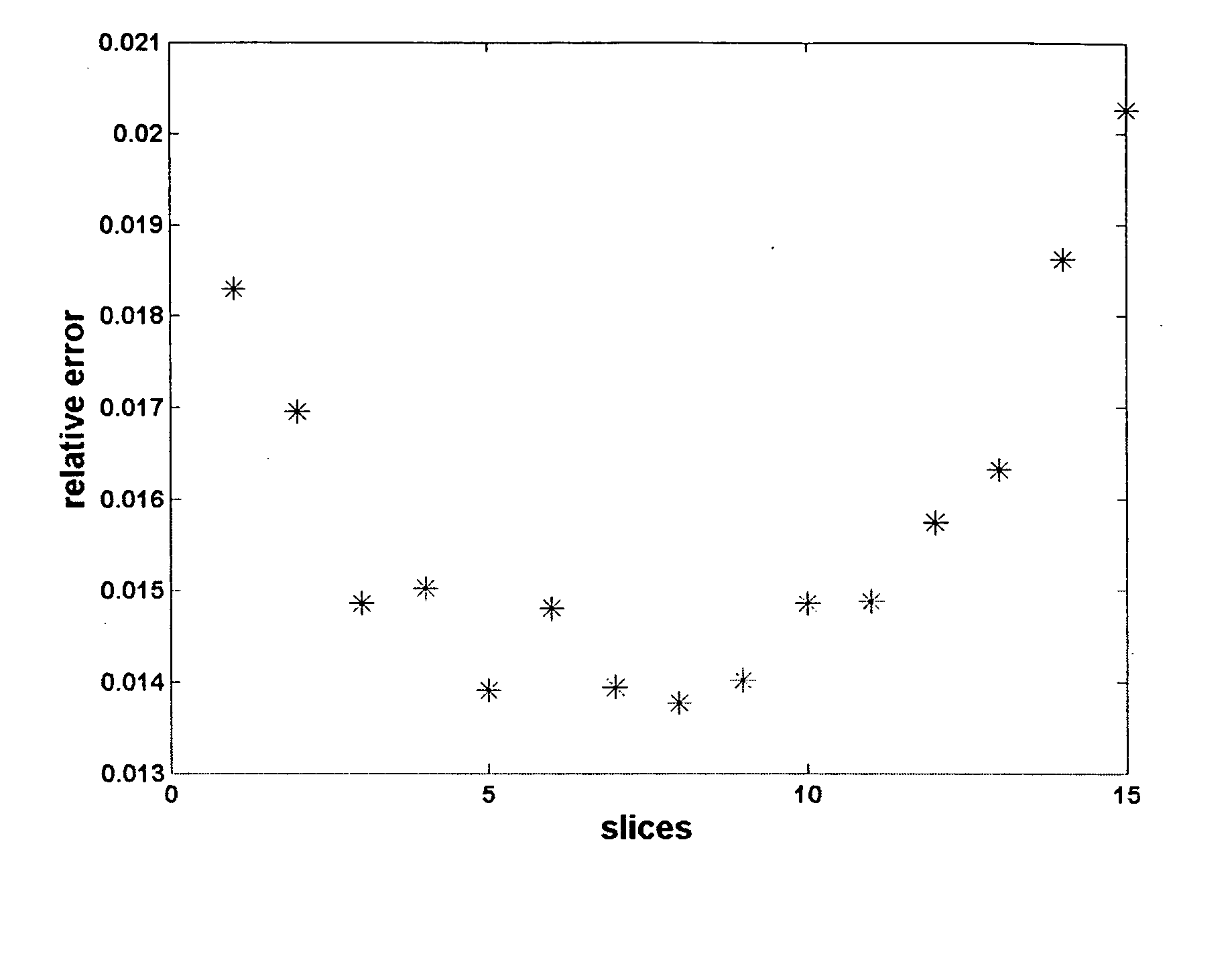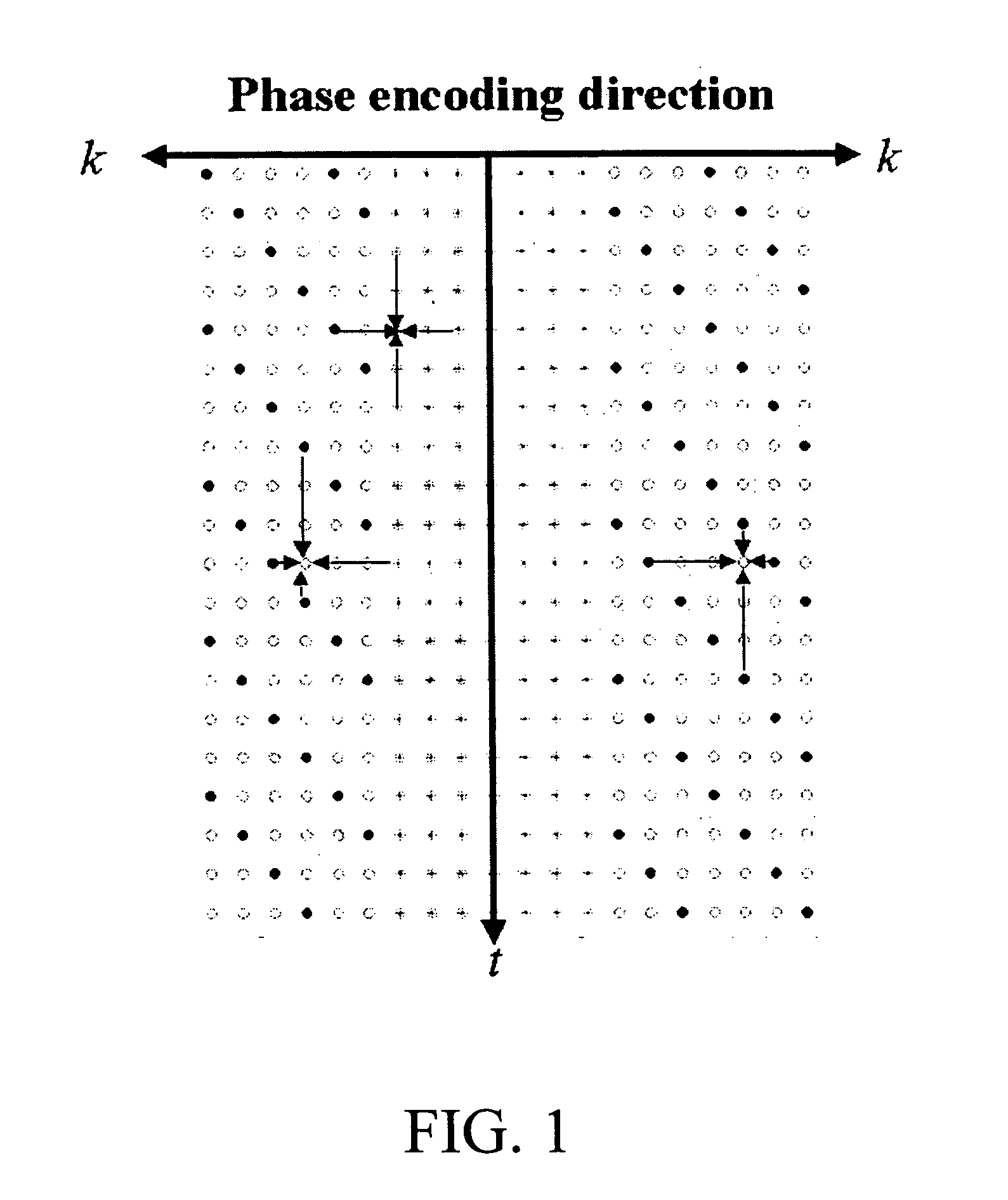Technique for parallel MRI imaging (k-t grappa)
a technology of parallel mri and imaging, applied in the field of parallel mri imaging, can solve the problems of limited approach, speed of data acquisition, and certain amount of redundancy within the data
- Summary
- Abstract
- Description
- Claims
- Application Information
AI Technical Summary
Problems solved by technology
Method used
Image
Examples
example 1
[0044] A parallel-prior hybrid method of linear interpolation of data in k-t space in accordance with the subject invention was applied to cardiac MRI and functional MRI. The parallel-prior hybrid method of linear interpolation of data in k-t space, which can be referred to as k-t GRAPPA, was implemented in the MATLAB programming environment (MathWorks, Natick, Mass.) and run on a COMPAQ PC with a 2 GHz CPU and 1 Gb RAM. This embodiment of the subject invention (k-t GRAPPA), GRAPPA, and sliding block GRAPPA were all applied in each experiment. The experiment of cardiac MRI demonstrates that images reconstructed by k-t GRAPPA have less error than images reconstructed by conventional GRAPPA and images reconstructed by sliding block GRAPPA. The functional MRI experiment shows that k-t GRAPPA, even with only a single channel, can dramatically reduce acquisition time without loss of crucial information. To show the accuracy, the reconstructed image was compared with the reference image, ...
PUM
 Login to View More
Login to View More Abstract
Description
Claims
Application Information
 Login to View More
Login to View More - R&D
- Intellectual Property
- Life Sciences
- Materials
- Tech Scout
- Unparalleled Data Quality
- Higher Quality Content
- 60% Fewer Hallucinations
Browse by: Latest US Patents, China's latest patents, Technical Efficacy Thesaurus, Application Domain, Technology Topic, Popular Technical Reports.
© 2025 PatSnap. All rights reserved.Legal|Privacy policy|Modern Slavery Act Transparency Statement|Sitemap|About US| Contact US: help@patsnap.com



